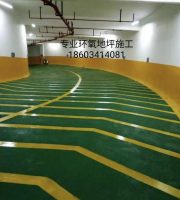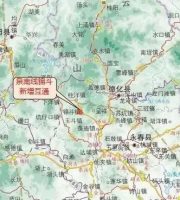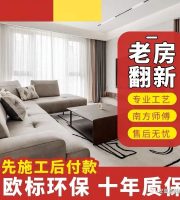Description of lightning: lightning is caused by the mutual high-speed motion and severe friction between clouds in the sky, which makes the high-end clouds and low-end clouds carry opposite charges
.
At this time, the low-end cloud also induces a large number of heterogeneous charges on the ground below it, forming a huge capacitance
.
When its field strength reaches a certain strength, it will produce ground discharge, which is the lightning phenomenon
.
In meteorology, thunderstorm days, annual average thunderstorm days and annual average ground lightning density are commonly used to characterize the frequency and intensity of lightning activities in a certain place
.
In addition, the annual lightning flash frequency is also used to evaluate the lightning activity, which refers to the total number of lightning strokes within 1000 square kilometers in a year
.
A large number of observational data show that there is a linear relationship between the number of lightning flashes and the number of thunderstorm days in an area
.
Usually, the lightning protection of the construction industry, more attention
.
The number of thunderstorm days; aviation, navigation, meteorology, communications and other industries are more and more concerned about the number of annual lightning flash
.
According to the annual average thunderstorm days, the lightning activities in China are generally divided into less thunderstorm area (< 15 days), medium thunderstorm area (< 15-40 days), more thunderstorm area (> 41-90 days) and strong thunderstorm area (> 90 days)
.
The lightning activity in China is the most active in summer and the least in winter
.
The global distribution is the most active near the equator, decreasing with the increase of latitude, and the polar region is the least
.
Damage of lightning: the damage of lightning is mainly due to the violent discharge phenomenon when the potential difference between clouds or between clouds and the earth and between clouds and air reaches a certain degree (25-30kv / cm)
.
Generally, there are three forms of lightning strike: direct strike, induction strike and spherical strike
.
Direct lightning strike is a rapid discharge phenomenon between charged clouds and a certain point on the earth
.
Induction lightning is a kind of secondary lightning that when the direct lightning occurs, the charged cloud disappears rapidly, and the partial high voltage occurs in some areas of the ground due to the large stray resistance, or in the process of direct lightning discharge, the strong pulse current produces electromagnetic induction to the surrounding wires or metal objects, and high voltage occurs, resulting in the flashover phenomenon
.
Spherical lightning is the phenomenon of spherical lightning: 1) direct lightning damage: when the lightning strikes directly on the building, the strong lightning current makes the water of the building (structure) vaporize and expand, which produces a great mechanical force, causing the building to burn or explode
.
In addition, when the current of the lightning arrester is discharged to the ground along the down lead, the potential to the ground will rise, and it may jump to the nearby objects, which is called lightning “counterattack”, thus causing fire or personal casualties
.
2) Inductive lightning damage: inductive lightning damage is also called secondary damage
.
It is divided into electrostatic induction mine and electromagnetic induction mine
.
Due to the great gradient of lightning current, it will produce a strong alternating magnetic field, which makes the surrounding metal components produce induced current
.
This current may discharge to the surrounding objects
.
If there are combustible materials nearby, it will cause fire and explosion, and the induction of the connecting wire will cause strong damage to the equipment
.
3) Electrostatic induction thunder: the electric field generated by the thunder cloud with a large number of negative charges will induce positive charges bound by the electric field on the metal wire
.
When the thunder cloud discharges to the ground or between clouds, the negative charge in the cloud disappears in an instant (strictly speaking, it is greatly weakened), then the bound positive charge induced on the line loses its binding in an instant
.
Under the action of electric potential energy, these positive charges will have a large current impact along the line
.
We should pay special attention to the anti-static problems of flammable and explosive places, computers and their sites
.
4) Electromagnetic induction lightning: when lightning strikes near the power supply line or on the lightning rod, a strong alternating electromagnetic field will be generated
.
The energy of the alternating electromagnetic field will be induced on the line and finally act on the equipment
.
Due to the existence of lightning rod, the chance of lightning fall on buildings is increased, and the chance and degree of inductive lightning damage to internal equipment are generally increased, causing great harm to electrical equipment
.
Therefore, the conductor of lightning rod should have good conductivity, and the grounding body must be in a low impedance state
.
5) Damage caused by lightning wave: when the lightning is close to the overhead pipeline, the high voltage shock wave will invade the room along the overhead pipeline, resulting in the introduction of high current, which may cause equipment damage or personal injury
.
If there are combustibles nearby, it is easy to cause a fire
.
1、 What is lightning protection grounding? Lightning protection grounding is divided into two concepts, one is lightning protection, to prevent damage caused by lightning; the other is grounding, to ensure the normal work of electrical equipment and personal safety
.
Grounding device is the general name of grounding body and ground wire, whose function is to lead the lightning current into the underground, and the protection of lightning protection system is related to this to a large extent
.
The characteristics of the grounding project itself determine the influence of the surrounding environment on the project effect
.
It is not feasible to design the grounding project without the specific situation of the project location
.
Practice requires systematic Grounding Theory to guide the engineering practice
.
The advantages and disadvantages of the design depend on the comprehensive consideration of many factors of the local soil environment
.
Factors such as soil resistivity, soil structure, water content and constructable area determine the shape, size and process material selection of grounding grid
.
Therefore, in the design of artificial grounding body, it should be based on the soil resistivity, soil distribution and other geological conditions where the grounding grid is located
.
Grounding body: also known as grounding electrode, it is a metal conductor or conductor group in direct contact with soil
.
It is divided into artificial grounding body and natural grounding body
.
As a conductor which is in close contact with the earth and provides electrical connection with the earth, the grounding body can safely disperse the lightning energy into the earth
.
2、 Design principle: communication line and communication machinery grounding are designed for lightning protection, strong current protection, electromagnetic induction protection, electric corrosion protection, communication interference protection, normal communication work and personal safety protection
.
All kinds of grounding systems (including combined grounding, protective grounding, lightning protection grounding, and various natural grounding bodies) in communication room have two setting modes (separate setting mode and combined setting mode), but only one setting mode is allowed in each place
.
The AC power line leading into the power supply room shall be equipped with corresponding low-voltage arrester and equipment for protecting transverse voltage outdoors
.
Grounding body (including lightning protection, repeated grounding of AC zero line, protective grounding, combined grounding, cable metal sheath, and various natural grounding bodies), underground lead-in wire and connection of bare conductor above ground, etc
.
The following measures should be taken to reduce electrochemical corrosion: ① galvanized steel, cast steel, copper or graphite electrode should be used for grounding body (including underground lead wire); ② DC working current of combined grounding system should be reduced; ③ there should be no DC or AC current in protective grounding system; ④ The lead-in cable shall adopt the cable with insulated outer sheath or the metal outer sheath of the cable shall be insulated with the indoor grounding system; ⑤ when two different metal wires (or metal bars) are connected, fusion welding shall be adopted as far as possible to ensure no false welding and false welding
.
When fasteners are used for connection, the connection shall be tinned
.
The lead of grounding body shall not be protected by steel pipe, and insulation measures shall be taken
.
When adopting the separate grounding mode, the following measures should be taken: (1) the distance between various underground grounding bodies and underground bare leads should be > 20m, and the ground wire pile should be set at the place where the grounding device is buried
.
② Protective grounding bar and combined grounding bar shall be installed respectively in the power supply room
.
③ The space distance between the outdoor lead wire of the grounding system and the lightning discharge line of the house: when the height of the house is 30m or below, it should be more than 2m generally.
.



